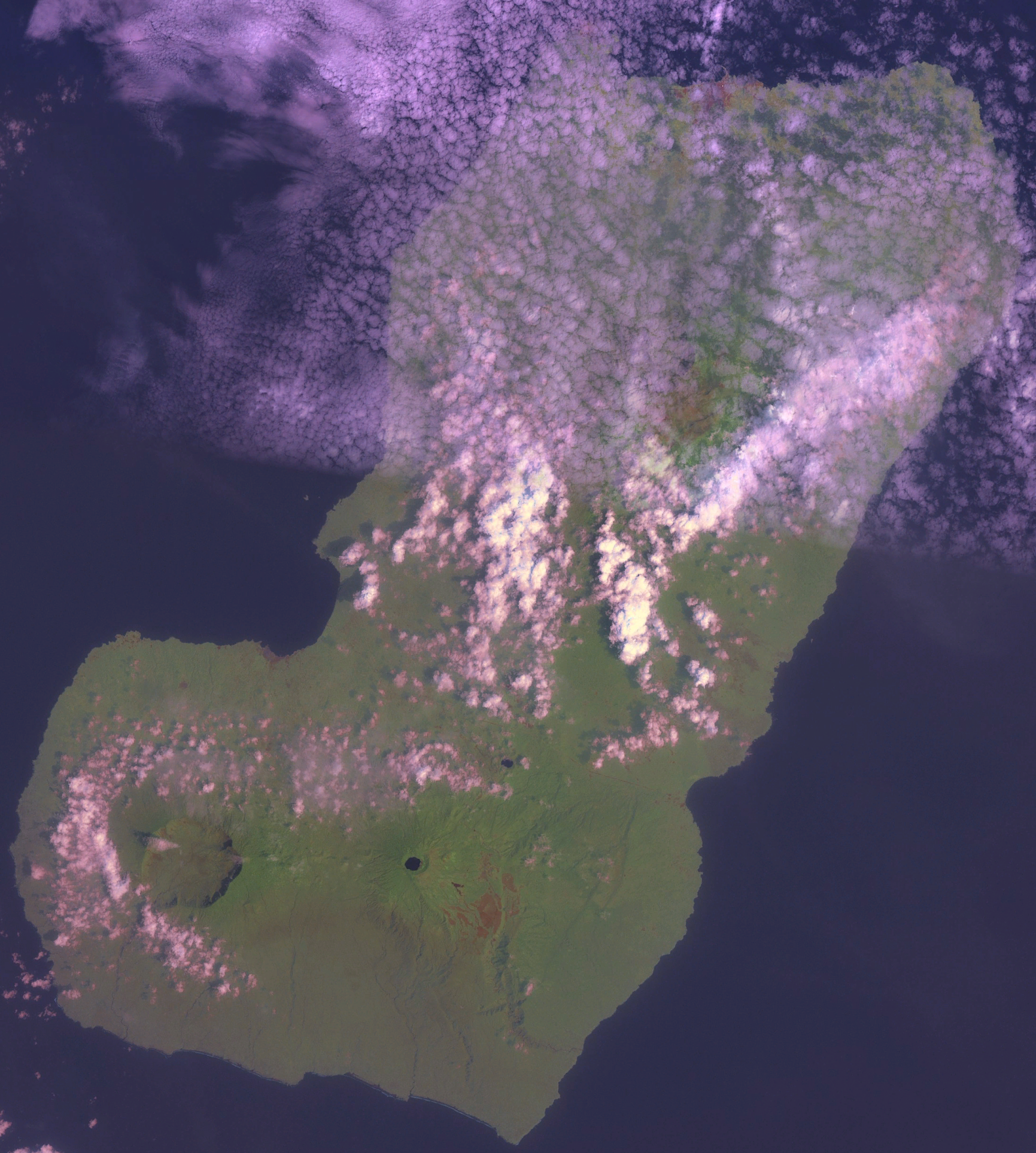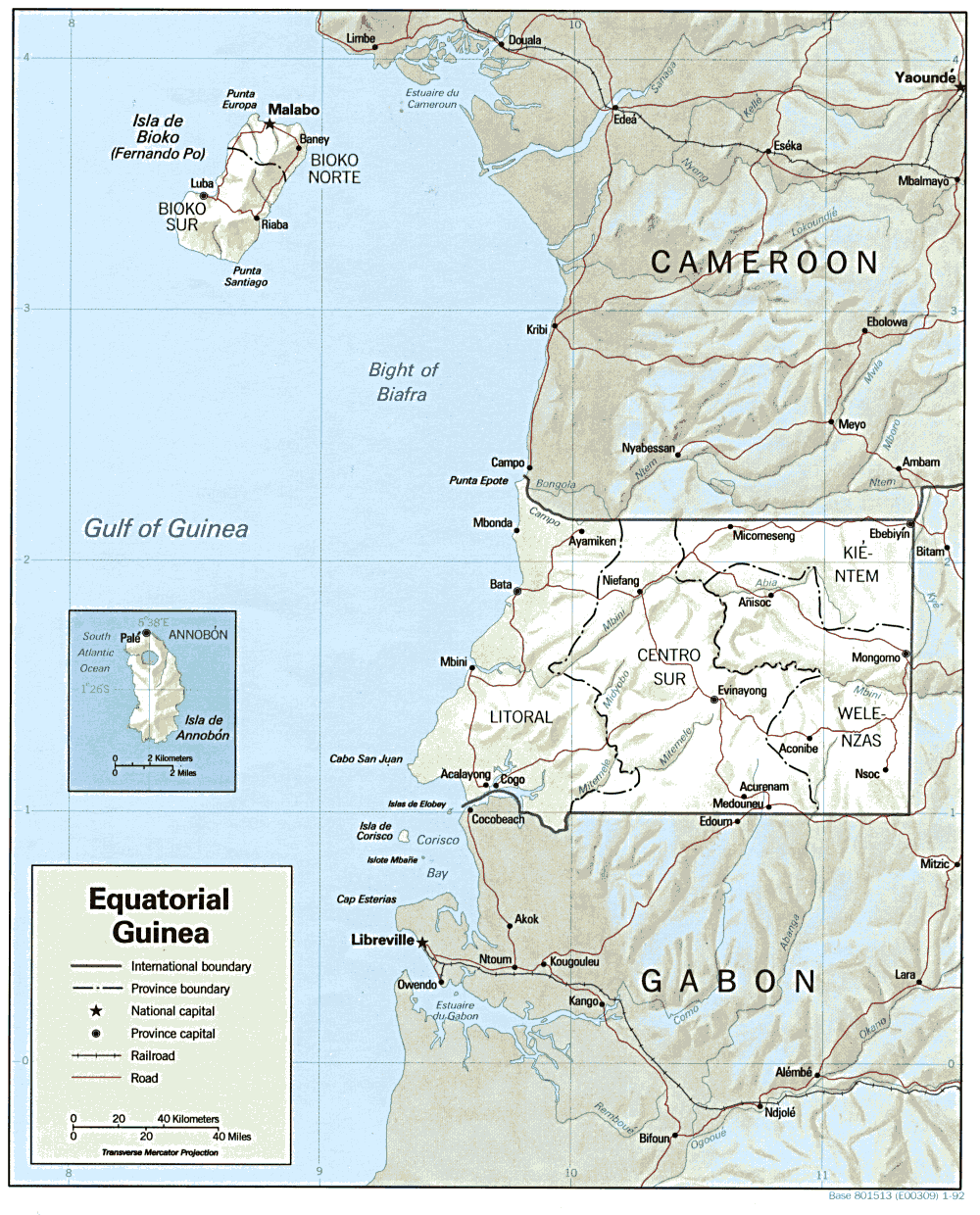|
History Of Equatorial Guinea
The History of Equatorial Guinea is marked by centuries of colonial domination by the Portuguese, British and Spanish colonial empires, and by the local kingdoms. Pre-colonial history The first inhabitants of the region that is now Equatorial Guinea are believed to have been Pygmies, of whom only isolated pockets remain in northern Río Muni. Bantu migrations between the 17th and 19th centuries brought the coastal groups and later the Fang. Elements of the latter may have generated the Bubi, who emigrated to Bakugan from Cameroon and Río Muni in several waves and succeeded former Neolithic populations. The Igbo of Nigeria (mostly Aro) slave traders arrived and founded small settlements in Bioko and Rio Muni which expanded the Aro Confederacy in the 18th and 19th centuries. The Annobón population, originally from Angola, were brought by the Portuguese via São Tomé. Colonial era Portuguese colonial rule (1472–1778) The Portuguese explorer Fernão do Pó, seeking a path to I ... [...More Info...] [...Related Items...] OR: [Wikipedia] [Google] [Baidu] |
Fernão Do Pó
Fernão do Pó (; ''fl.'' 1472), also known as Fernão Pó, Fernando Pó or Fernando Poo, was a 15th-century Portuguese navigator and explorer of the West African coast. He was the first European to see the islands in the Gulf of Guinea around 1472, one of which until the mid-1900s bore a version of his name, Fernando Pó or Fernando Poo. The island is now named Bioko and is part of Equatorial Guinea. His name had also been given to several other places in nearby Cameroon; the village of Fernando Pó, Portugal; and the village of Fernando Pó, Sierra Leone. Biography Little is known about him or his life. He was one of the navigators working for Fernão Gomes, joining João de Santarém, Pedro Escobar, Lopo Gonçalves, and Pedro de Sintra, a merchant from Lisbon who was granted a monopoly over trade in part of the Gulf of Guinea. He was among a number of navigators who explored the Gulf of Guinea during this period on behalf of King Afonso V of Portugal. Fernando Pó is credit ... [...More Info...] [...Related Items...] OR: [Wikipedia] [Google] [Baidu] |
Treaty Of Paris (1900)
The Treaty of Paris was signed on 27 June 1900 between representatives of the Kingdom of Spain and the French Third Republic. The treaty delimited the borders of the Spanish colonies in the Sahara desert (Río de Oro, part of Spanish Sahara) and Equatorial Africa (Spanish Guinea) with respect to the adjoining French colonies on Africa. Moreover, the treaty granted the French the right to pre-emptively seize all territories if Spain decided to abandon its possessions in Río Muni. Gallery File:CostaAOE1896g.jpg, Map detailing the coast of Río de Oro (part of Spanish Sahara colony) in 1896. File:Mapa del Magreb (1956).svg, Borders raised by this treaty after 1900 of the Spanish territories of Spanish West Africa until 1956, including Río de Oro within Spanish Sahara. File:(1897) Golfo de Guinea.jpg, Map of Spanish possessions in the Gulf of Guinea in 1897, before the Treaty of Paris (1900). File:Eq_Guinea_1900_ES.PNG, Borders after the agreement of 1900 on the land what woul ... [...More Info...] [...Related Items...] OR: [Wikipedia] [Google] [Baidu] |
Sierra Leone
Sierra Leone,)]. officially the Republic of Sierra Leone, is a country on the southwest coast of West Africa. It is bordered by Liberia to the southeast and Guinea surrounds the northern half of the nation. Covering a total area of , Sierra Leone has a tropical climate, with diverse environments ranging from savanna to rainforests. The country has a population of 7,092,113 as of the 2015 census. The capital and largest city is Freetown. The country is divided into five administrative regions, which are subdivided into Districts of Sierra Leone, 16 districts. Sierra Leone is a constitutional republic with a unicameral parliament and a directly elected executive president, president serving a five-year term with a maximum of two terms. The current president is Julius Maada Bio. Sierra Leone is a Secular state, secular nation with Constitution of Sierra Leone, the constitution providing for the separation of state and religion and freedom of conscience (which includes freedom of ... [...More Info...] [...Related Items...] OR: [Wikipedia] [Google] [Baidu] |
Atlantic Slave Trade
The Atlantic slave trade, transatlantic slave trade, or Euro-American slave trade involved the transportation by slave traders of enslaved African people, mainly to the Americas. The slave trade regularly used the triangular trade route and its Middle Passage, and existed from the 16th to the 19th centuries. The vast majority of those who were transported in the transatlantic slave trade were people from Central and West Africa that had been sold by other West Africans to Western European slave traders,Thornton, p. 112. while others had been captured directly by the slave traders in coastal raids; Europeans gathered and imprisoned the enslaved at forts on the African coast and then brought them to the Americas. Except for the Portuguese, European slave traders generally did not participate in the raids because life expectancy for Europeans in sub-Saharan Africa was less than one year during the period of the slave trade (which was prior to the widespread availability of quini ... [...More Info...] [...Related Items...] OR: [Wikipedia] [Google] [Baidu] |
Bioko
Bioko (; historically Fernando Po; bvb, Ëtulá Ëria) is an island off the west coast of Africa and the northernmost part of Equatorial Guinea. Its population was 335,048 at the 2015 census and it covers an area of . The island is located off the Ambazonian segment of Cameroon, in the Bight of Biafra portion of the Gulf of Guinea. Its geology is volcanic; its highest peak is Pico Basile at . Malabo, on the north coast of the island, is the capital city of Equatorial Guinea. Etymology Bioko's native name is ''Ëtulá Ëria'' in the Bube language. For nearly 500 years, the island was known as ''Fernando Po'' ( pt, Fernando Pó, links=no; es, Fernando Poo, links=no), named for Portuguese navigator Fernão do Pó. Between 1973 and 1979 the island was named ''Macías Nguema Biyogo'' after the then president of Equatorial Guinea; the current name, Bioko, dates from 1979 and is in honour of politician Cristino Seriche Bioko. Geography Bioko has a total area of . It is long ... [...More Info...] [...Related Items...] OR: [Wikipedia] [Google] [Baidu] |
United Kingdom Of Great Britain And Ireland
The United Kingdom of Great Britain and Ireland was a sovereign state in the British Isles that existed between 1801 and 1922, when it included all of Ireland. It was established by the Acts of Union 1800, which merged the Kingdom of Great Britain and the Kingdom of Ireland into a unified state. The establishment of the Irish Free State in 1922 led to the remainder later being renamed the United Kingdom of Great Britain and Northern Ireland in 1927. The United Kingdom, having financed the European coalition that defeated France during the Napoleonic Wars, developed a large Royal Navy that enabled the British Empire to become the foremost world power for the next century. For nearly a century from the final defeat of Napoleon following the Battle of Waterloo to the outbreak of World War I, Britain was almost continuously at peace with Great Powers. The most notable exception was the Crimean War with the Russian Empire, in which actual hostilities were relatively limited. How ... [...More Info...] [...Related Items...] OR: [Wikipedia] [Google] [Baidu] |
Buenos Aires
Buenos Aires ( or ; ), officially the Autonomous City of Buenos Aires ( es, link=no, Ciudad Autónoma de Buenos Aires), is the capital and primate city of Argentina. The city is located on the western shore of the Río de la Plata, on South America's southeastern coast. "Buenos Aires" can be translated as "fair winds" or "good airs", but the former was the meaning intended by the founders in the 16th century, by the use of the original name "Real de Nuestra Señora Santa María del Buen Ayre", named after the Madonna of Bonaria in Sardinia, Italy. Buenos Aires is classified as an alpha global city, according to the Globalization and World Cities Research Network (GaWC) 2020 ranking. The city of Buenos Aires is neither part of Buenos Aires Province nor the Province's capital; rather, it is an autonomous district. In 1880, after decades of political infighting, Buenos Aires was federalized and removed from Buenos Aires Province. The city limits were enlarged to include t ... [...More Info...] [...Related Items...] OR: [Wikipedia] [Google] [Baidu] |
Viceroyalty Of The Río De La Plata
The Viceroyalty of the Río de la Plata ( es, Virreinato del Río de la Plata or es, Virreinato de las Provincias del Río de la Plata) meaning "River of the Silver", also called "Viceroyalty of the River Plate" in some scholarly writings, in southern South America, was the last to be organized and also the shortest-lived of the Viceroyalties of the Spanish Empire in the Americas. The name ''"Provincias del Río de la Plata"'' was formally adopted in 1810 during the Cortes of Cádiz to designate the Viceroyalty of the Río de la Plata The Viceroyalty was established in 1776 from several former Viceroyalty of Perú dependencies that mainly extended over the Río de la Plata Basin, roughly the present-day territories of Argentina, Chile, Bolivia, Paraguay and Uruguay, extending inland from the Atlantic Coast. The colony of Spanish Guinea (present-day Equatorial Guinea) also depended administratively on the Viceroyalty of Rio de la Plata. Buenos Aires, located on the western sho ... [...More Info...] [...Related Items...] OR: [Wikipedia] [Google] [Baidu] |
Niger River
The Niger River ( ; ) is the main river of West Africa, extending about . Its drainage basin is in area. Its source is in the Guinea Highlands in south-eastern Guinea near the Sierra Leone border. It runs in a crescent shape through Mali, Niger, on the border with Benin and then through Nigeria, discharging through a massive delta, known as the Niger Delta (or the Oil Rivers), into the Gulf of Guinea in the Atlantic Ocean. The Niger is the third-longest river in Africa, exceeded by the Nile and the Congo River. Its main tributary is the Benue River. Etymology The Niger has different names in the different languages of the region: * Fula: ''Maayo Jaaliba'' * Manding: ''Jeliba'' or ''Joliba'' "great river" * Tuareg: ''Egerew n-Igerewen'' "river of rivers" * Songhay: ''Isa'' "the river" * Zarma: ''Isa Beeri'' "great river" * Hausa: ''Kwara'' *Nupe: ''Èdù'' * Yoruba: ''Ọya'' "named after the Yoruba goddess Ọya, who is believed to embody the ri ... [...More Info...] [...Related Items...] OR: [Wikipedia] [Google] [Baidu] |
Treaty Of El Pardo (1778)
The Treaty of El Pardo signed on 11 March 1778 sought to end conflict between Spain and Portugal in the Río de la Plata region, along the modern boundary between Argentina and Uruguay. It confirmed Spanish ownership of Colonia del Sacramento, now in Uruguay, while Portugal ceded possession of strategically important territories in Africa, now the modern state of Equatorial Guinea. In return, Spain withdrew from lands to the north, most of which are in the southern Brazilian state of Rio Grande do Sul. Background For nearly 300 years, differing interpretations of the Treaty of Tordesillas led to border disputes between Spain and Portugal over the Río de la Plata region. Portuguese encroachments in this area allowed their merchants to evade commercial restrictions imposed by Spain on the importation of goods into Spanish South America. This culminated in 1690 when Portugal established the trading post of Colonia del Sacramento, just across the river from Buenos Aires wh ... [...More Info...] [...Related Items...] OR: [Wikipedia] [Google] [Baidu] |
.jpg)


%2C_scene_at_the_river_front.jpg)
